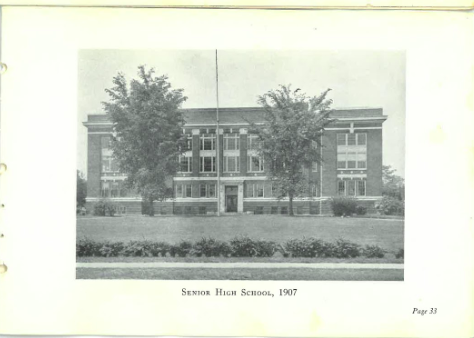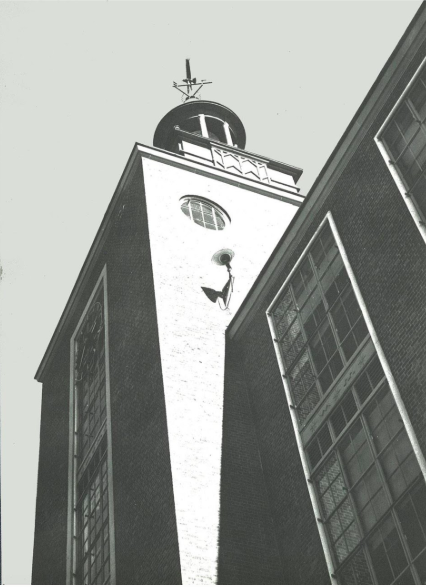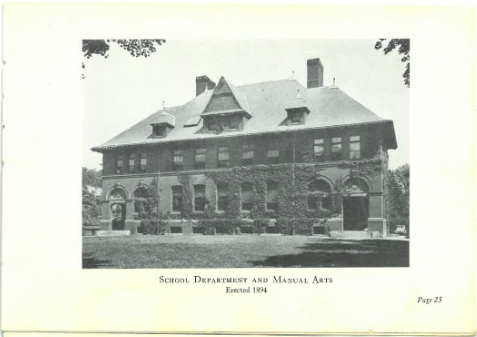Early Days of the Wellesley High School (an Interview with Alice L. Phillips W.H.S. 1869) by Carolyn J. Peck — Originally published by The Wellesley Townsman, Friday, May 24, 1929
This year marks the sesquicentennial, the 150th anniversary of Wellesley High School’s first graduating class in 1869. To celebrate this historic event, The Bradford has decided to publish a brief history of the high school’s earliest days, which originally appeared in The Wellesley Townsman ninety years ago.

One morning in March, 1865, just before the close of the Civil War, two classes of boys and girls in the town of Needham began their high school work in Maugus Hall, Grantville, located where the present Unitarian Church stands. Many boys and girls since then remember vividly their first day in high school, but these young people had the unique distinction of being the very first scholars of the Wellesley High School, the forerunners of the scores of classes who have succeeded them. This school was called the Needham High School, West Division, while the one for children living in what is now Needham was the Needham High School, East Division.
Before this, all who wished to fit for college or take advanced work were obliged to attend either the Allen School for Boys in West Newton or Lasell Seminary at Auburndale. Girls who planned to be teachers went directly from the grammar school to some normal school, usually Framingham. Now, however, since there was no convenient way of reaching the East Division school, it seemed necessary to provide proper accommodations for pupils in the western part of the town, and thus the Wellesley High School, the not so-called for some time, came into existence in March 1865.
They say a rolling stone gathers no moss, and certainly the new high school had no chance to become moss bound, for twice a year it picked up its possessions and moved to West Needham or Grantville, as the season demanded. This continued during the four years of the first class. For few years between 1869 and 1875, when the Shaw School was completed, the High School occupied the third floor of what is now the Fiske Cottage on Central St., Wellesley. This building housed also in two rooms the eight grades below the high school. It stood on the site of the Hunnewell School. In West Needham, it met in Waban Hall, now the Taylor Block in Wellesley Square.
These young people had no convenient trolley or family automobiles to take them to school. They walked or went by train, but in any case they left home soon after 7:30, for school began early and lasted till nearly two o’clock in the afternoon. On that first day, two girls or two boys were assigned to each of the large double desks. Thus they were compelled to be very close friends, altho up to that time they might have been total strangers. Miss Alice Phillips, whose story this is, the writer acting only as a scribe, was seated with Miss Nell Watkins, who afterwards taught at the North School and later became the wife of Abel F. Stevens. Their son, Abel F. Stevens, Jr. is a well-known resident of Wellesley.
The pupils numbered about thirty the first year. A third class was added in the second year, and a fourth in the third year, so that by the last year of the class of ’69, the school had its full quota of classmen, and a much larger number of pupils. The first teacher was David S. Farnham. He was very popular with the students, but left after a year to take a position in Newton. A friend of his succeeded him, T. W. H. Hussey. Mr. Hussey was a fine scholar, but a poor disciplinarian. After two years, George Francis Robinson took his place. All these teachers were young tho they had had some previous experience in teaching. Mr. Robinson was a graduate of Harvard.
Every Friday they had “General Exercises” to which the parents were invited. For this, the scholars wrote compositions on such abstruse and difficult subjects as The Seasons, Return Good for Evil, Punctuality, Attention to Recitation, Shadows, Truth – topics assigned by the teacher. Needless to say, for what child would ever voluntarily write on such matters? If a pupil was lucky enough to have a poetical vein, so that he could write verse or even a paragraph of some poem, he need write only once in two weeks. Otherwise, he must have something ready every week.

There were school socials in those days, too, though the students called them “reunions.” These were held in Waban Hall at irregular intervals. The “eats” were simple at these affairs, good New England bread and butter made by Mrs. Nathan Longfellow, who had taken many prizes for her bread at the Norfolk Agricultural Fair in Dedham.
The last festivity of the school year was then as now the graduation which came on March 13 for the class of 1869, exactly four years from their entrance. This took place in the morning at Maugus Hall, Grantville, with each of the seven graduates furnishing some part of the program before receiving his diploma. Members of the class were these, all but the first three having finished their earthly school life:
- Alice L. Phillips, Wellesley Hills
- Emma O. Kingsbury, Wellesley
- Frank A. Kingsbury, Dover, N.H.
- Isabel G. Kinnee (Mrs. Dewing)
- M. Louise Clark
- Mary Field
- Emma Fuller, sister of the late Frank L. Fuller
(Most of them became teachers after their graduation, in Wellesley and elsewhere.)
After graduation the rest of the school kept on with its studies until almost the Fourth of July, tho there was a short vacation just after graduation. School began again the last week in August with the year divided late into a fall, a winter, and a spring term. Nothing was made of Christmas, but a brief vacation came at Thanksgiving.
Surely this early high school training shows by its fruits its value. These first graduates and those immediately following them set a high standard for their successors. Any school may well be proud of its record which numbers among its graduates such well known and valuable men and women as Dr. Marshall L. Perrin, Professor Katharine Lee Bates, and Mrs. Alice Ames Winter, with many others whose modesty prevents mention at this time. The later days, too, even down to the present, have their roll of honor of graduates doing fine work in their various callings. All hail then to the Wellesley High School of Yesterday, Today and Tomorrow!

